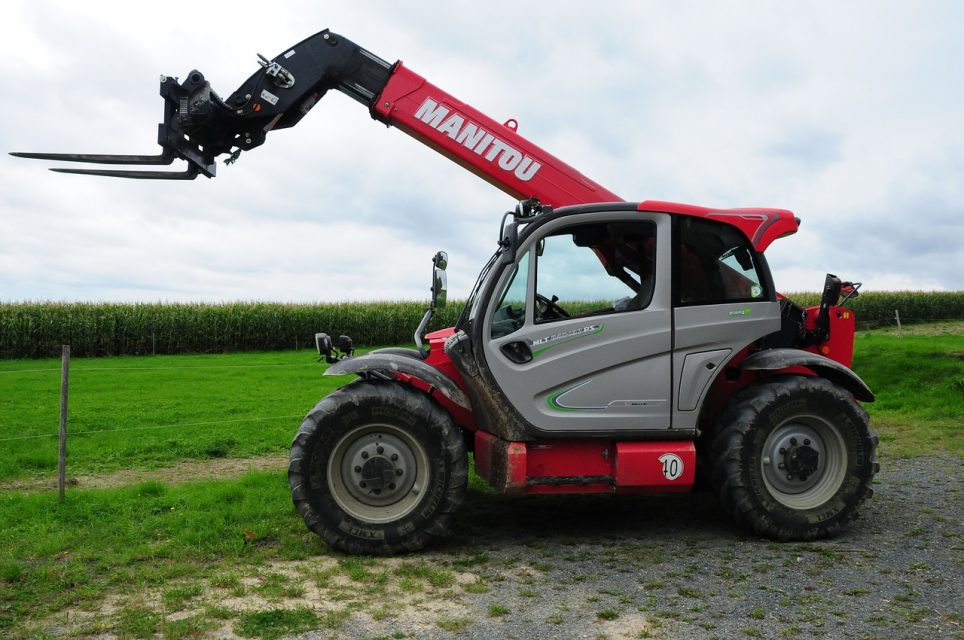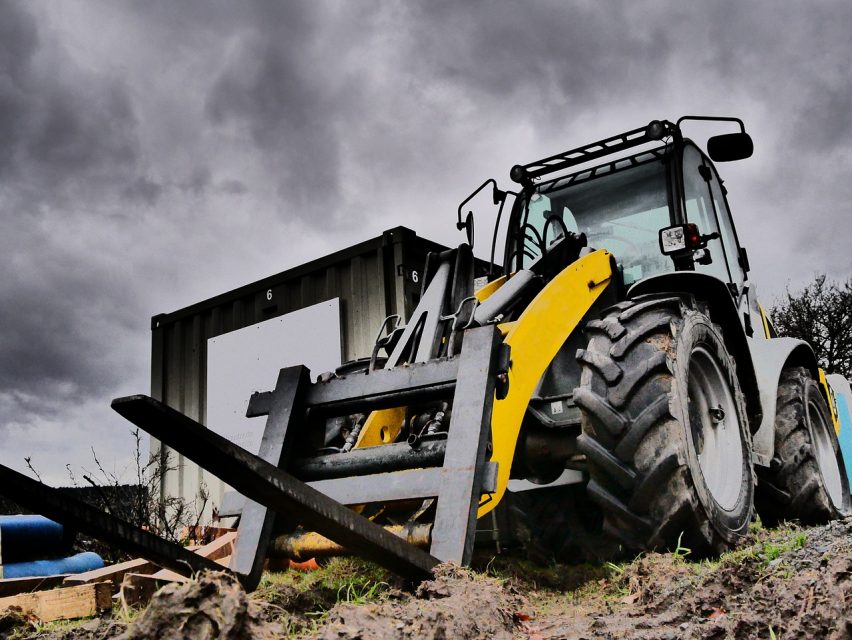Forklifts are used for a variety of purposes. Here is the list of the most common types of forklifts to help you choose whats best for you. They are able to lift incredibly large loads and reach heights that could frighten most people. Because of this, they are a staple of warehouses and they fill the shelves daily. If you want to know about all of the most common and useful forklifts out there, these examples cover just about everything. Various forklift manufacturers produce different types of forklifts
Also read: Top Forklifts manufacturers
1. Standard warehouse forklift
It’s hard to compete with the classic forklift. It’s one of the most common sights you’ll see in any warehouse. They are pretty simple in their design. They resemble a kind of small golf truck that possesses twin forks at the very front.
Their versatility and practical usage are unrivaled and you won’t see them disappearing from warehouses any time soon. There are a bunch of different models with different perks. There are even some forklifts that are powered entirely with electricity. Warehouses that are trying to become eco-friendly should seriously consider these environmentally friendly machines.

2. Telescopic handler
Telescopic handlers or “telehandlers”, as they’re also known, are very useful pieces of machinery. In some way, they are a kind of hybrid child of forklifts and cranes. They have the range of a crane with the practical handling of a forklift.
While forklifts are pretty limited with their fork’s one-dimensional movement, telehandlers solve this problem by being able to move diagonally forward and backward. This allows them to operate with loads that would be out of the reach of a regular forklift. Odd angles and tight spaces are no match for its boom and extendable arm.
Because of their versatility, they are extremely useful in construction. You’re able to get thousands of kilograms up to a specific height and distance without having to employ an expensive crane. A telehandler also takes up a lot less space, which makes it extremely practical and desirable for certain situations during construction.
3. Rough Terrain forklift
Sometimes, a standard forklift might not be suited for the job. The tires might not be designed with certain slopes in mind. They are usually tailor-made to fit in a warehouse and work on a relatively flat surface. This makes them unsuitable for jobs that are located in the outdoors. In these types of situations, you would be better off utilizing a rough terrain forklift.
As their label suggests, these types of forklifts are commonly used outside of the warehouse. You can’t expect mother nature to create a flat surface for your forklift to thrive in, which is why some off-road machinery is necessary. The tires they use differ from the standard forklift tires you’ll see on most models. Rough terrain forklift tires are tough and they are very well adapted to an outdoor environment.
In order to give better stability, the tires on these models are over sized and threaded, which gives them more traction in dusty and slippery environments. You don’t want a little rain to cause disaster for your heavy transport machinery. If that weren’t enough, you can also expect these things to have a four-wheel drive. There’s no machine that is better suited for outdoor work than a rough terrain forklift.
4. Walkie Stacker
These devices aren’t exactly forklifts, but they’re close enough to qualify. They are pretty strange in appearance, but they’re also extremely practical in warehouse environments. Sometimes you need the convenience of a pallet jack alongside the strength of a small forklift. This is best achieved with the walkie stacker. You can comfortably transport materials from one end of the warehouse to the other, while also being able to lift them enough for it to matter.
Their design is a lot simpler than most forklifts. You don’t have a cab for the driver to sit inside of. Instead, you work behind the stacker and maneuver the load as if it were an advanced pallet jack. Much like a pallet jack, these devices don’t have a lot of power behind them and they aren’t very fast. However, they have enough maneuverability and compactness to be extremely useful in many tight spaces around the warehouse.
Despite their compact and humble design, you’re able to easily lift some heavy loads up to the third shelf of most warehouses.
5. Order Picker
These aren’t all that different when compared to walkie stackers. They are both smaller versions of proto-forklifts and they don’t handle extremely heavy loads. This one is special because of the specific role it does. It doesn’t just transport regular payloads, it actually lifts the warehouse personnel, too.
Order pickers are used to get operators closer to the load that was intended for shipping. When you are handling customer orders, you need to find the exact package that has been ordered. There’s no use bringing down a whole pallet in order to see which package is the right one. Instead, the order picker lifts the operator up to thirty-six feet and then he or she can find it on their own.
The versatile design they use makes them ideal for parts that are irregular in shape. You won’t always end up lifting and putting down things that fit neatly onto a standard pallet.

6. Counterbalance forklift
Counterbalance forklifts don’t have any visual attributes that set them apart from the standard warehouse forklift. However, they have a couple of secrets below the hub. As their name suggests, they have a little something that gives them a bit of additional stability.
A bunch of weights are located at the back of the vehicle, giving it a significant boost in balance when lifting things with the forks. Their three tires contribute to the added stability of the counterbalance forklift and they allow for it to maneuver a lot better than its standard counterparts. They don’t use extending arms on their forks, which means that the driver needs to drive up to the load and the loading destination before actually letting go of the payload.
The best thing about these forklifts is that they’re incredibly reliable. It’s not like the counterbalance can lose its effectiveness over time. The weight will stay the same and it will function just fine after years of extensive use. Because of this, a lot of warehouses search for these models when they’re looking for used forklifts for sale. Much like the standard forklift, they’ll do the job without complicating things for the warehouse or workers. There are no special metal or electronic parts that are unique to the forklift.
7. Industrial forklift
When big payloads need to be moved, you’re going to want a strong and reliable piece of machinery to do it. Industrial forklifts are perfect for the job. They combine the practicality of a telehandler with the mobility and reliability of a standard forklift. Basically, they are extremely powerful forklifts that are well-suited for enormous loads.
The average industrial forklift will have a maximum capacity of about fifteen tons. This makes it ideal for industrial settings where these kinds of weights are a normal sight. While it can’t reach difficult places as the telehandler can, the industrial forklift can go a lot higher than you might expect from such a powerful machine. It’s only used on specialized jobs because most warehouses won’t have much use for an excessively powerful lifting machine.
In conclusion, forklifts are incredible pieces of machinery with countless uses. It might be as simple as saying that they lift things, but they do a lot more. They help the warehouse function and without them material handling would be an incredibly slow and tedious job.


Understanding the different types of forklift is important if you are to purchase one. Thanks for this post!